In this piece, I’ll explain what a buyer persona is and show you how to combine different research methods to form and create detailed buyer personas. In just a few thoughtful steps, you’ll walk away with consumer stories and profiles representing your customer base.
What is a buyer persona?
A buyer persona is a representation of your ideal customer that you create from audience and market research. Personas include essential information about your target customer (like demographics, behavior, interests, challenges, etc.) and help you better reach them and meet their needs.
The strongest buyer personas are based on market research and insights you gather from your existing and potential customer base (through surveys, interviews, etc.).
Buyer personas are unique to every company, and so is their name for them. You may see buyer personas referred to as “customer personas,” “marketing personas,” “audience personas,” or “target personas.” Each has the same meaning but will look unique to your company.
You might have as few as one or two personas, or even 10+ — it all depends on your business.
What type of business needs to create buyer personas?
All types of businesses should create (and will benefit from) buyer personas because every business needs customers or clients to be successful.
What is a negative buyer persona?
While a buyer persona represents your ideal customer, a negative — or exclusionary — persona represents who you don't want as a customer.
Your negative personas can include:
- Customers who are too advanced for your product or service.
- Potential customers who are just too expensive to acquire.
- People who only engage with your content to gain knowledge.
Whatever the exclusion factor is, the knowledge is valuable because it helps you narrow down your strategic execution so that your inputs directly contribute to your results.
Why are buyer personas important to your business?
According to our research, most marketers lack crucial information about their audience, so they struggle to make personalized content.
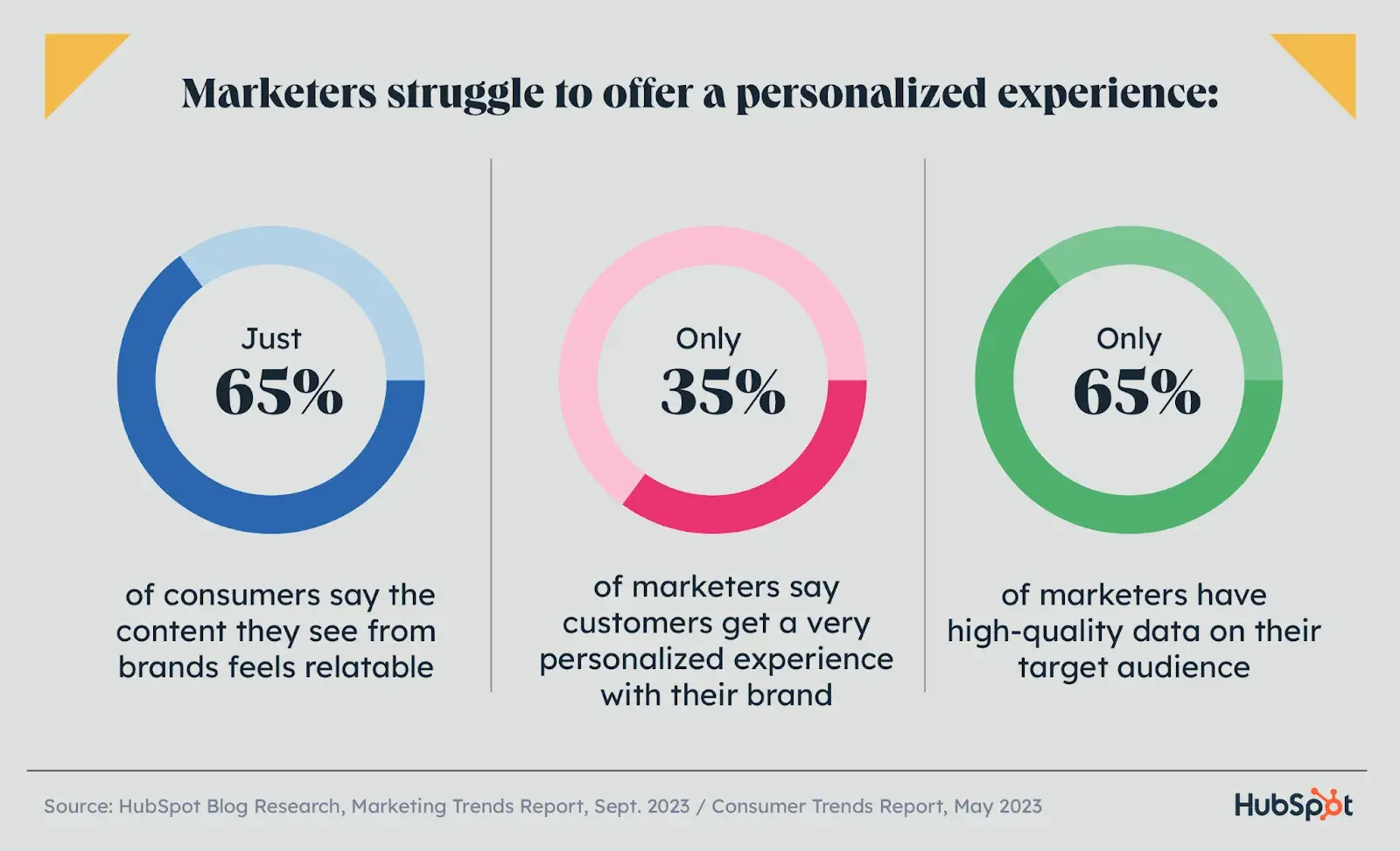
Before diving into the buyer persona creation process, I want to pause to understand the impact of well-developed buyer personas on your business (specifically, your marketing efforts).
1. Buyer personas help you personalize your marketing.
Personalization is the main reason your buyer personas are essential, and it’s only possible when you truly understand your audience. Customers appreciate personalization, as 96% of marketers say it increases the likelihood of buyers becoming repeat customers, and 94% say it increases sales.
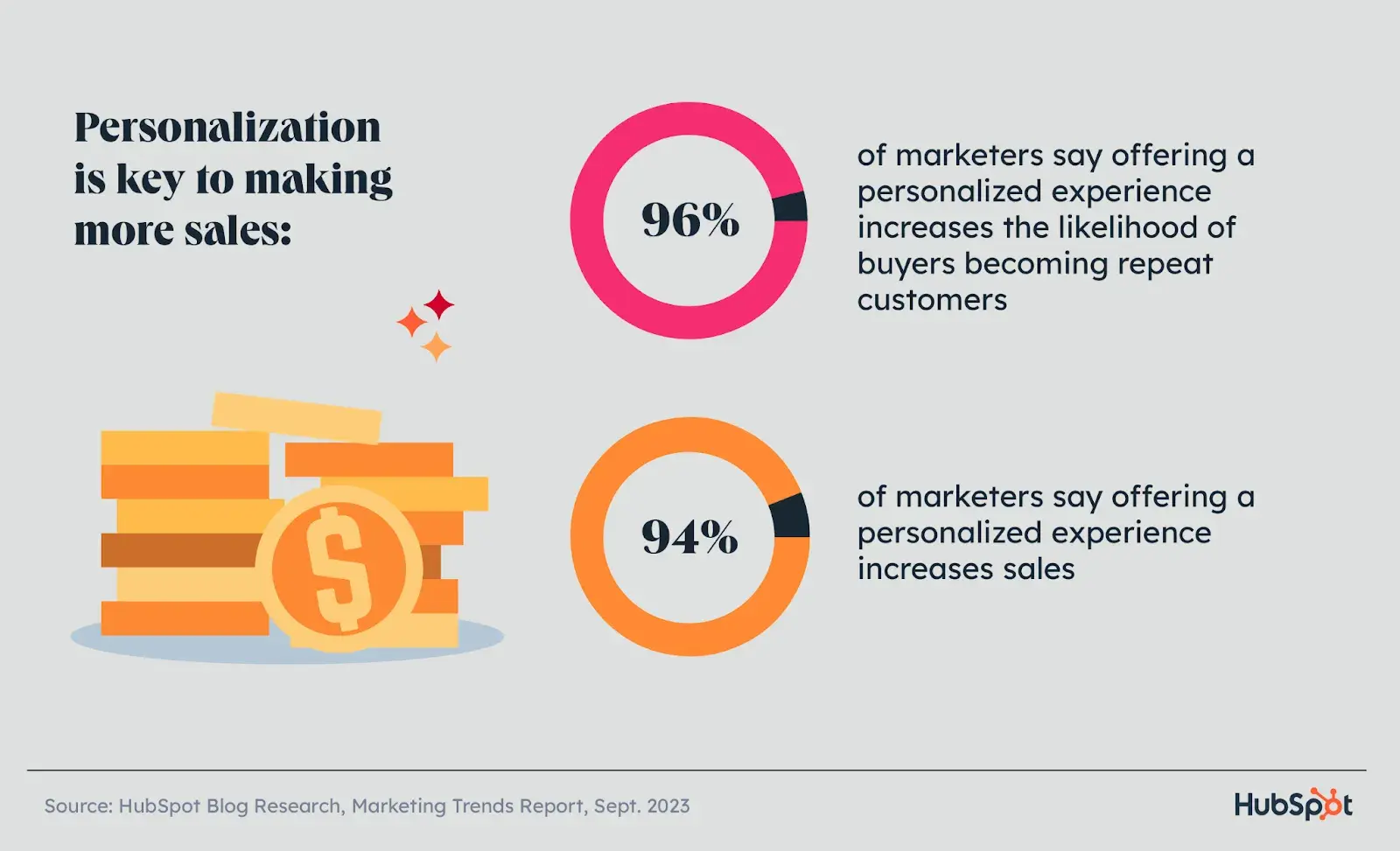
Those stats represent my experience as a consumer: I’m more likely to be a fan of and give repeat business to brands that know what I like and cater to my interests. For example, a brand email that lets me know a product on my wishlist is on sale will, more likely than not, turn me into a loyal and appreciative customer.
2. Buyer personas inform product development.
Extensive research into your target customer helps you with your product development process. You’ll know what your ideal customer experiences on a day-to-day basis, which can inspire innovative improvements to your product.
So, for example, say I sell kitchen utensils. My buyer persona research tells me my ideal customer lives in the South, where grilling is common. I would likely find success developing and offering grilling utensils or improving my existing offerings to work in indoor and outdoor environments.
3. Buyer personas enable the optimization of demand generation, lead generation, and lead nurturing content.
Buyer persona research tells you how your ideal customer wants to hear from you, which can influence your demand generation strategies.
For example, if your target audience prefers SMS communication, you might respond by creating SMS lead nurturing campaigns instead of emails.
4. Buyer personas help you tailor your product’s messaging to its target audience.
Completed buyer personas help you tailor your content, messaging, product development, and services to meet your target audience’s specific needs, behaviors, and concerns.
This ties back to the personalization I mentioned before: When you speak to your audience with your marketing campaigns, you’re more likely to be effective.
In fact, marketers who offer customers a personalized experience are 215% more likely to say their marketing strategies are effective than those who don’t.
5. Buyer personas enhance targeted marketing strategies.
Creating detailed buyer personas gives you the ability to craft content and messaging that truly connects with your audience. When you dive into each persona’s preferences and behaviors, you’re able to tailor your marketing to specific segments in ways that feel both relevant and effective.
For example, instead of sending nurturing emails to your entire database, you can segment by buyer persona and use a tool, like Marketing Hub, to tailor messaging to what you know about each one.
I’ve found that combining personas with lifecycle stage data works wonders for mapping out and creating highly specific content. When you align your messaging with where your audience is in their journey, it just clicks. If you’re interested in trying this, a content mapping template is a great resource to explore.
Buyer personas are also an excellent tool if you target a niche audience. I run Breaking the Blueprint (BtB), a blog column for minority business owners and entrepreneurs, and the target audience is more specific than the general HubSpot Blog (Black entrepreneurs vs. entrepreneurs as a whole, for example).
Since the target audience is unique, I conducted buyer persona surveys to learn more about their specific interests, needs, and pain points to make sure the content I publish is much more likely to make an impact and be helpful.
Don’t forget about negative personas, either. They’re a game-changer for cutting out unproductive leads. If you identify and exclude those unlikely to convert — like people engaging only for knowledge or those too advanced for your offering — you can zero in on the prospects that truly matter, saving time and boosting your ROI.
Types of Buyer Personas
While developing your personas, you may ask yourself, “What are the different types of buyer personas?” From there, it’d be simple to adjust one for your business — right?
That’s not exactly how it works — sorry to burst your bubble. Since every business (no matter how many competitors they have) is unique, their buyer personas are unique.
Yes, there are standard attributes you can apply to, say, specific age groups, but even those have variation. For example, my mom’s generation overwhelmingly prefers traditional marketing tactics, but she loves Instagram Reels more than anyone I know.
There isn’t a list of universally recognized buyer personas to choose from, nor is there a standard for the number of personas you need. If you’re new to personas, I recommend starting small. You can always develop more as you grow.
In general, companies may have the same or similar categories for their buyer personas (e.g., a marketer, an HR rep, an IT manager, etc.). But, your business’ different personas and the number of them it requires depend on your target audience and what you offer your customers.
This explains why buyer personas are so important: They’re uniquely put together to help your specific business achieve its goals.
What goes into persona development?
We’ve discussed the importance of buyer personas and the (lack of) different types. So now, let’s discuss how you can develop your own.
The main component of buyer persona development is research. Once you’ve done your research, you look for patterns and turn those patterns into actionable tips and strategies you include in your buyer persona.
You’ll also form the team that will play a role in your process. A great place to start is choosing a representative or two from relevant customer-facing teams, especially sales and marketing.
Salespeople have direct communication with customers and insight into their needs, and marketing teams have data about customer behavior.
Once you’ve identified stakeholders, you’ll start conducting your research and gathering your data. Then, you’ll compile your personas and start using them for your marketing campaigns.
Ready to start creating your buyer personas? Let’s dive in.
How to Create a Buyer Persona In 5 Steps
High-quality buyer personas are based on concrete facts about your audience’s interests, behavior, and demographics.
So, the best way to create your buyer personas is through research, surveys, and interviews — all with a mix of customers, prospects, and those outside your contacts database who align with your target audience.
When I created personas for Breaking the Blueprint, I discovered helpful and practical methods for gathering the information you need to develop your personas (you can also further your knowledge on this topic through the free HubSpot Academy course).
1. Research your customer.
Research is the basis of your buyer persona. Without it, personas are based on assumptions.
The information you want to get from your research includes:
- Demographic info. Information like age, gender, education, location, etc., gives you a foundational understanding of who your persona is.
- Behaviors. These include needs, purchasing behavior, brand loyalty, and decision-making process which let you know how people behave as customers, what they respond to, and how they like to interact with preferred businesses.
- Psychographic information. Things like lifestyle, values, and interests give you information about any factors influencing decisions, motivations, and behaviors.
- Goals and objectives. These tell you how your product or service relates to what they’re attempting to achieve.
- Pain points and challenges. These tell you the issues that your persona faces, how your product or service is a solution to their needs, and how to position it as that.
- Industry/professional information. Collect info like job title and responsibilities, tools used, industry, and company size to get a sense of how you fit into their work day (if applicable).
You can separate your research process into two categories: your existing customers and everyone else.
I do want to note that, when collecting demographic information, some people are more comfortable disclosing personal information privately, or some might not want to at all. I recommend making it optional unless it’s a pivotal part of your buyer persona.
Existing Customers
If you already have customers, they’re the best place to start. If you’re building your persona for a new business, you can scroll down to Everyone Else.
You can conduct interviews (face-to-face or otherwise) and send out surveys to learn why they’re your customers. Responses will help you create value propositions and selling points for marketing materials that speak directly to your audience’s interests.
Your historical business data and analytics also offer a wealth of information about your current customers’ purchase history, touchpoints, preferred channels, etc. You can also:
- Check your website traffic analytics to identify useful information about your existing audience, such as demographics, which pages attract the most visitors and why, and what marketing campaigns drive the most traffic.
- Consider your sales team’s feedback on the leads they interact with most. What generalizations can you make about the different types of customers you serve best?
- Analyze customer feedback and support requests.
If you’re having direct conversations, I find it helpful to include descriptive buzzwords and mannerisms you pick up on. This can help your team identify certain personas when talking to prospects.
Everyone Else
Everyone else includes existing leads, prospects, people who have never heard of you, and even those who are negative buyer personas.
I recommend researching these groups second (unless you’re a new business) because you’ll already have a sense of what your ideal customer looks like from the information you’ve gathered about your existing customers. You’ll be more focused on who you talk to and where you look for people to talk to.
Your research into everyone else can include the same things you employed for current customers, as well as:
- Focus groups.
- Look through your contacts database to uncover trends about how certain leads or customers find and consume your content.
- Social listening to see what people talk about online in relation to what you offer, your competitors, and industry as a whole.
- Customers who have churned and left feedback on their reasoning.
- Creating forms to use on your website to capture persona information (like company size).
Now, how do you use your completed research to create your persona? Analyze the information.
2. Analyze available information.
Once you’ve gone through the research process, you’ll have a lot of meaty, raw data about your potential and current customers. But what do you do with it?
How do you distill all of it so it’s easy for everyone to understand all the information you’ve gathered?
Identify patterns and commonalities in your research. Answers to your interview questions, information submitted in lead forms, and insight from the sales team will all help you understand how to be the most relevant to your persona so you can draw them in.
3. Build your persona.
Once you’ve gone through your research and found those patterns, it’s time to start building your persona.
HubSpot’s free Make My Persona generator, as well as our free downloadable persona templates, can help you organize the information you’ve gathered and share it with relevant stakeholders so everyone can develop an in-depth understanding of the people they’re targeting at work.
Use HubSpots free Make My Persona tool.
You can also use this video as an instructional resource:
With our template, the first step is to fill in your persona’s basic demographic information. I recommend this, regardless of the template you use.
Here’s an example of how you might complete Section 1 in your template for one of your personas:
Download HubSpot’s free persona templates.
The second step is to outline what you’ve learned about your persona’s motivations. This is where you’ll distill the information you learned from digging into the “why” during your research.
What keeps your persona up at night? Who do they want to be? Most importantly, tie that all together by telling people how your company can help them.
4. Help your sales team prepare for conversations with your persona.
The personas you create can be even more impactful when you include real quotes from interviews that exemplify what your audience is concerned about, who they are, and what they want. This is where the buzzwords and mannerisms you might have noted during interviews can come in handy.
You can also create a list of the objections they might raise so your sales team can prepare to address those during conversations with prospects.
5. Craft messaging for your persona.
Tell people how to talk about your products/services with your persona. This includes the nitty-gritty vocabulary you should use and a more general elevator pitch that positions your solution in a way that resonates with your persona.
This will help you ensure everyone in your company speaks the same language when conversing with leads and customers.
Finally, make sure you give your persona a name (e.g., Finance Manager Margie, IT Ian, or Landscaper Larry), so everyone internally refers to each persona the same way, allowing for cross-team consistency.
And if you’re a HubSpot customer, you can easily add your persona to Marketing Hub by following this step-by-step setup guide.
Your buyer personas are essential, and so is regularly reviewing and updating them if necessary. I’d recommend an annual review to stay on top of your target audience and how their preferences evolve.
How to Find Interviewees for Researching Buyer Personas
One of the most critical steps to establishing your buyer persona(s) is finding people to speak with to understand who your buyer persona is.
But how do you find these interviewees? There are a few sources I recommend tapping into.
1. Use your current customers.
Your existing customer base is the perfect place to start your interviews. They’ve already purchased and engaged with your company and exemplify your target persona(s).
Don’t just talk to people who love your product and want to spend an hour gushing about you (as good as that feels). Customers who are unhappy with your product will show other patterns that will help you form a solid understanding of your personas.
For example, you might find that some of your less happy customers have bigger teams and need greater collaboration functionality from your product. Or, maybe they find your product too technical and difficult to use. In both cases, you learn something about your product and what your customers’ challenges are.
Another benefit to current customers is that you don’t always need incentives (e.g., gift cards) because they like being heard. Interviewing gives them a chance to tell you about their challenges and what they think of your product. Your customers can then have an impact on the products they use.
Involving them in interviews can also deepen their loyalty to your company. When you reach out, always be clear that your goal is to get their feedback and that you highly value it.
2. Use your prospects.
You can also interview people who have not purchased your product and know little about your brand. Your prospects and leads are great options because you already have their contact information.
I recommend using the information you do have about them (i.e., anything you’ve collected through lead gen forms or website analytics) to figure out who fits your persona.
Tools like Enlyft can help you create custom buyer persona profiles and match your prospects to them to make it easier to find the people you need to talk to.
3. Use your referrals.
Your existing network (coworkers, existing customers, social media contacts, etc.) is a great resource for finding people you’d like to interview and getting an introduction.
You’ll likely get some high-quality interviews with this method, but volume can be lower. Referrals are especially beneficial if you’re heading into new markets or starting fresh without leads or customers.
If you don’t know where to start, I suggest searching on LinkedIn for people who may fit into your target personas and seeing who you share connections with, and reaching out to them for introductions.
4. Use third-party networks.
Third-party networks can help you recruit interviewees completely removed from your company. For example, UserTesting.com lets you run remote user testing. You just have less control over the sessions you run.
Now, let’s go over some tips for recruiting interviewees once you find them.
Tips for Recruiting Buyer Persona Interviewees
As you reach out to potential buyer persona interviewees, here are my tips for improving response rates and running smooth interviews.
- Decide how many people you need to speak to. I wish I could give a set answer, but the number of people you need to interview for a well-rounded persona will vary. I recommend starting with at least three to five for each persona you create and make sure it’s a mix of customers, prospects, and people who don’t know your company. If you reach a point where you can predict what an interviewee is about to stay, you probably have a good enough sample and can call it.
- Create your questions beforehand. After the small talk, you’ll jump into your questions. You want to have your persona interview questions ironed out ahead of time for a seamless interview process; otherwise, you risk looking disorganized and losing attention.
- Use incentives. Incentives give people a reason to participate, especially those who don’t have a relationship with you. A simple gift card is an easy option.
- Make it clear that it isn’t a sales call. This is especially important when dealing with non-customers who are weary of getting stuck on a sales call. Explain that you’re researching and want to learn from them, not sell to them.
- Make it easy to say yes. Take care of everything for your interviewees so they only have to say yes. Suggest times, and be flexible so they can pick what works best for them.
Buyer Persona Examples
I’ll share some examples of completed buyer personas so you can get a better understanding of what they look like.
B2B Buyer Persona Example
The image below is a B2B buyer persona for someone who works in HR. The persona paints a clear picture of the target customer’s struggles and how the business can best meet those needs.
In this case, HR recruiting tools streamline processes, make recruiting easier, and help HR expertly manage their overall job duties.
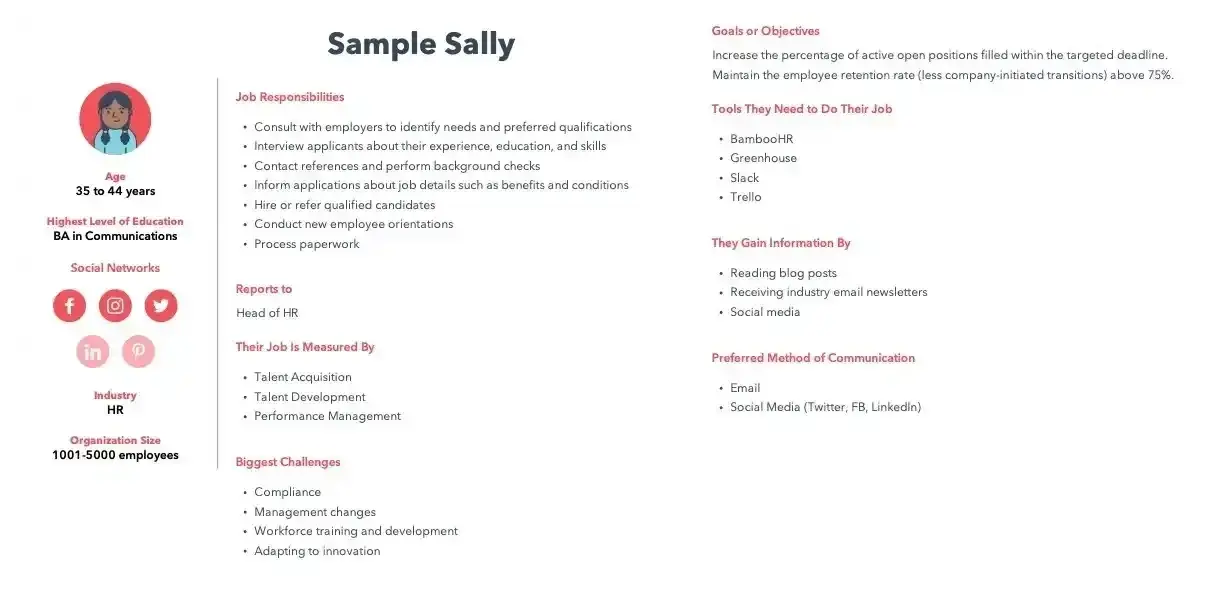
B2C Buyer Persona Example
The image below is a B2C buyer persona for a music streaming service.
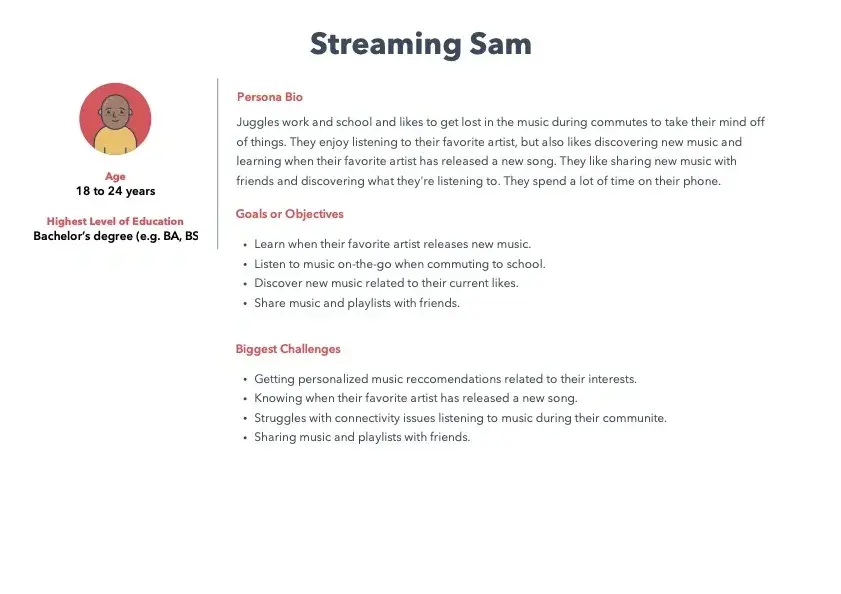
Based on this persona, a streaming service would want to ensure that it has a user-friendly mobile app, sends new music notifications, and makes it easy for users to discover new music related to their interests and share content with friends.
Create Your Buyer Personas
Creating buyer personas helps you understand your target customers on a deeper level and ensures everyone on your team knows how to best target, support, and work with your customers.
When you use your personas to guide decisions, I don’t doubt that you’ll see improvement in your reach, boost your conversions, and increase customer loyalty.
Editor's note: This post was originally published in May 2015 and has been updated for comprehensiveness.
Buyer Personas


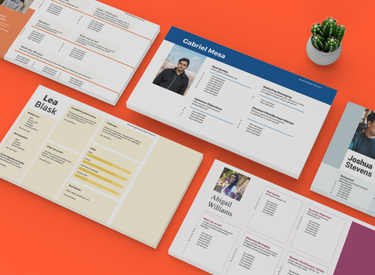
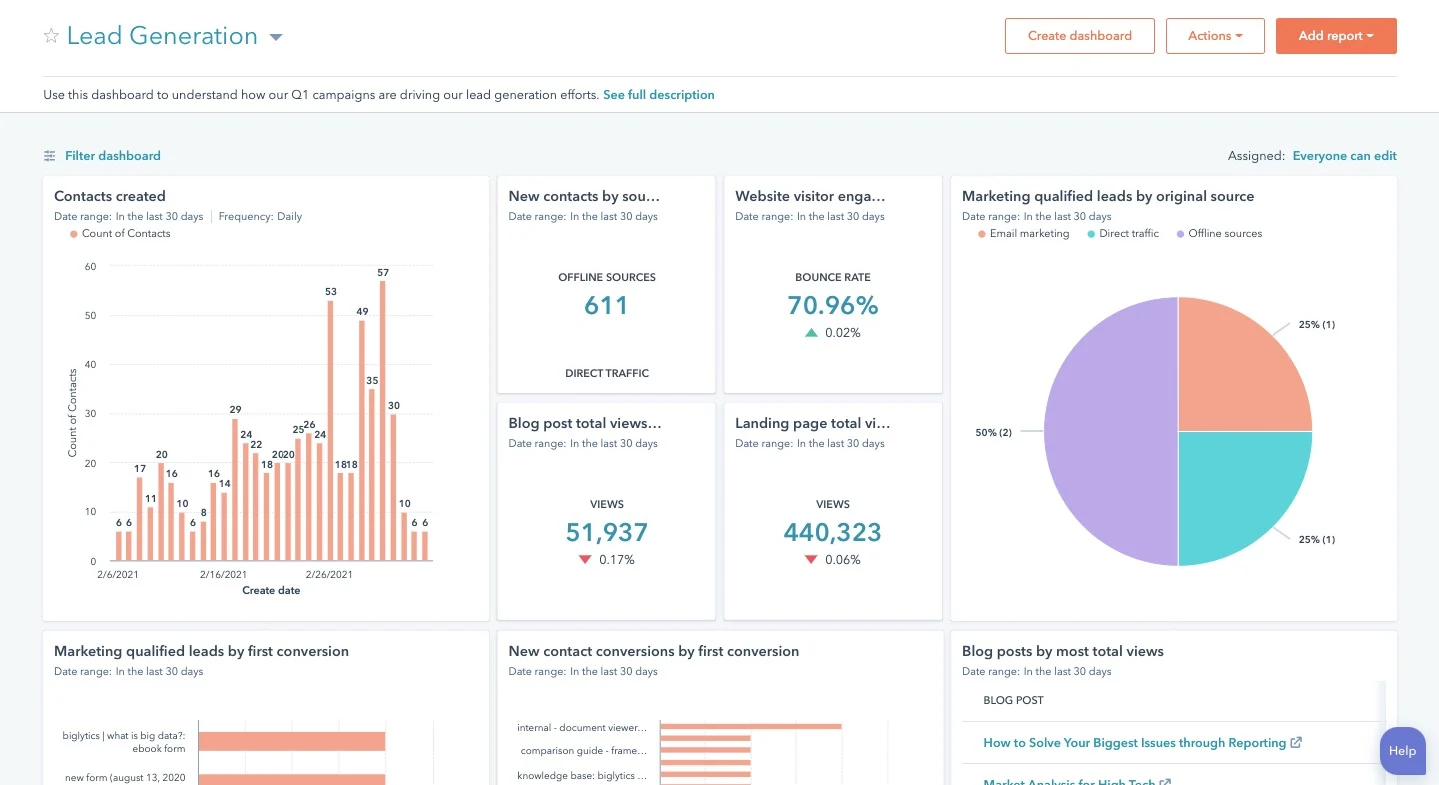
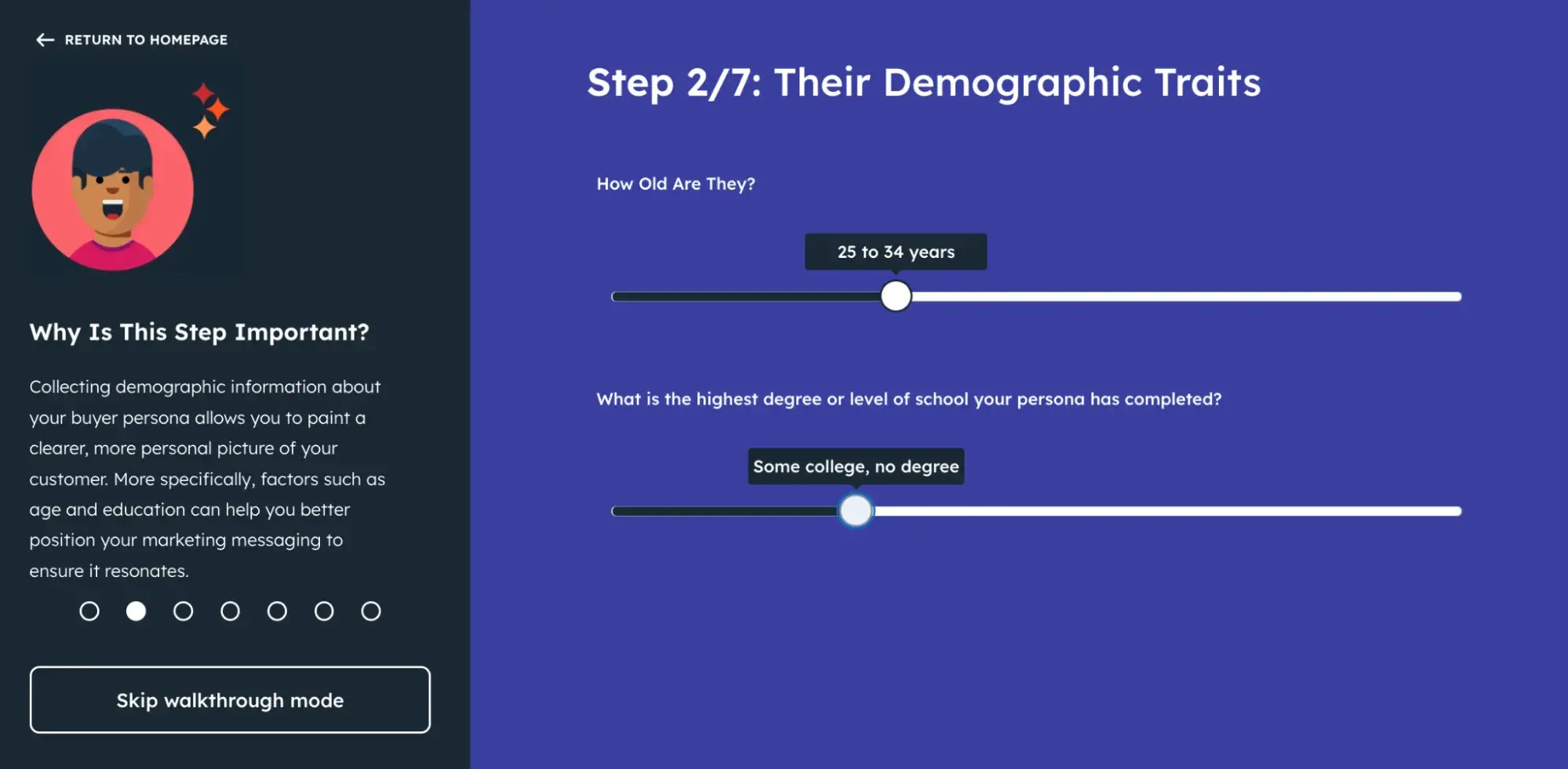
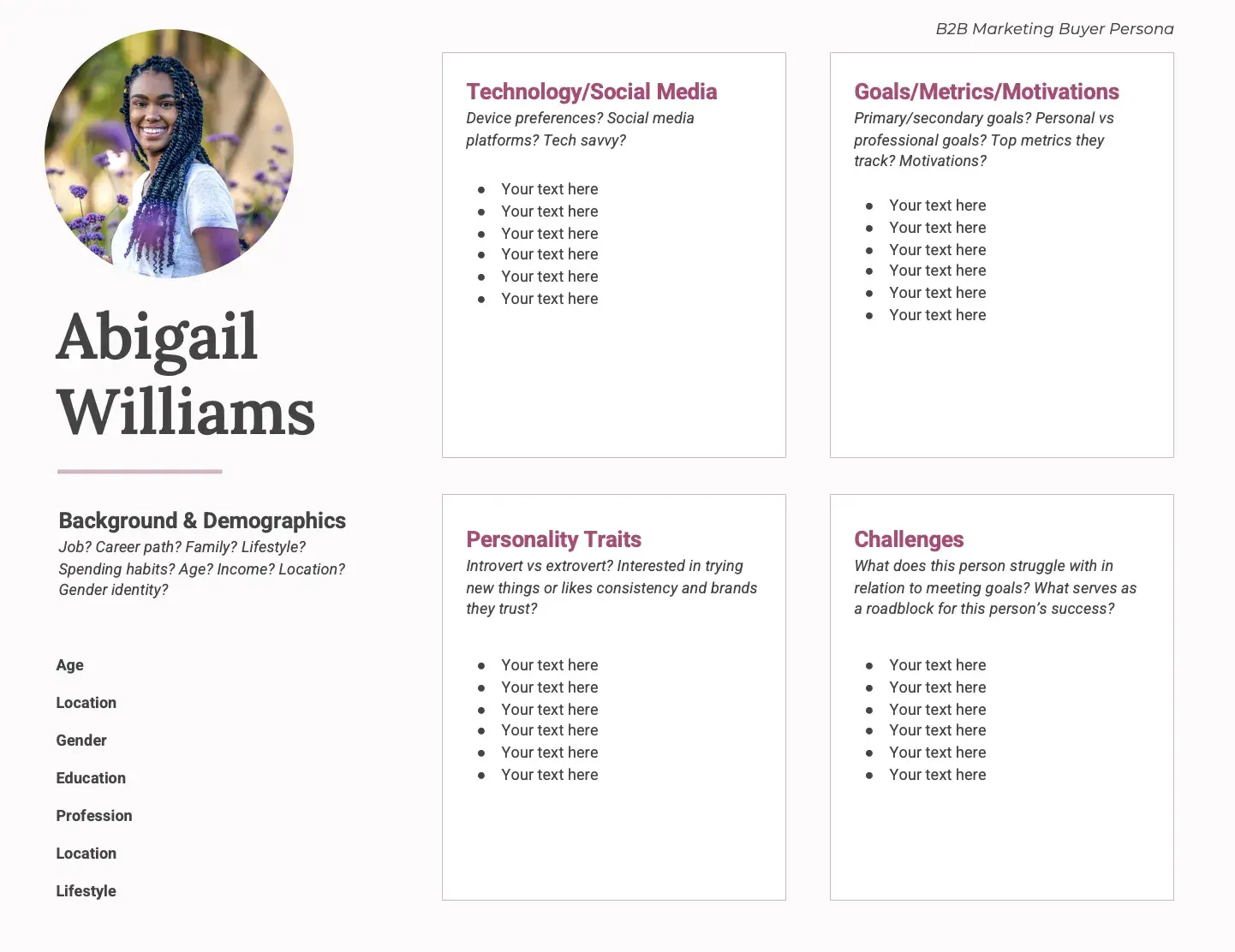
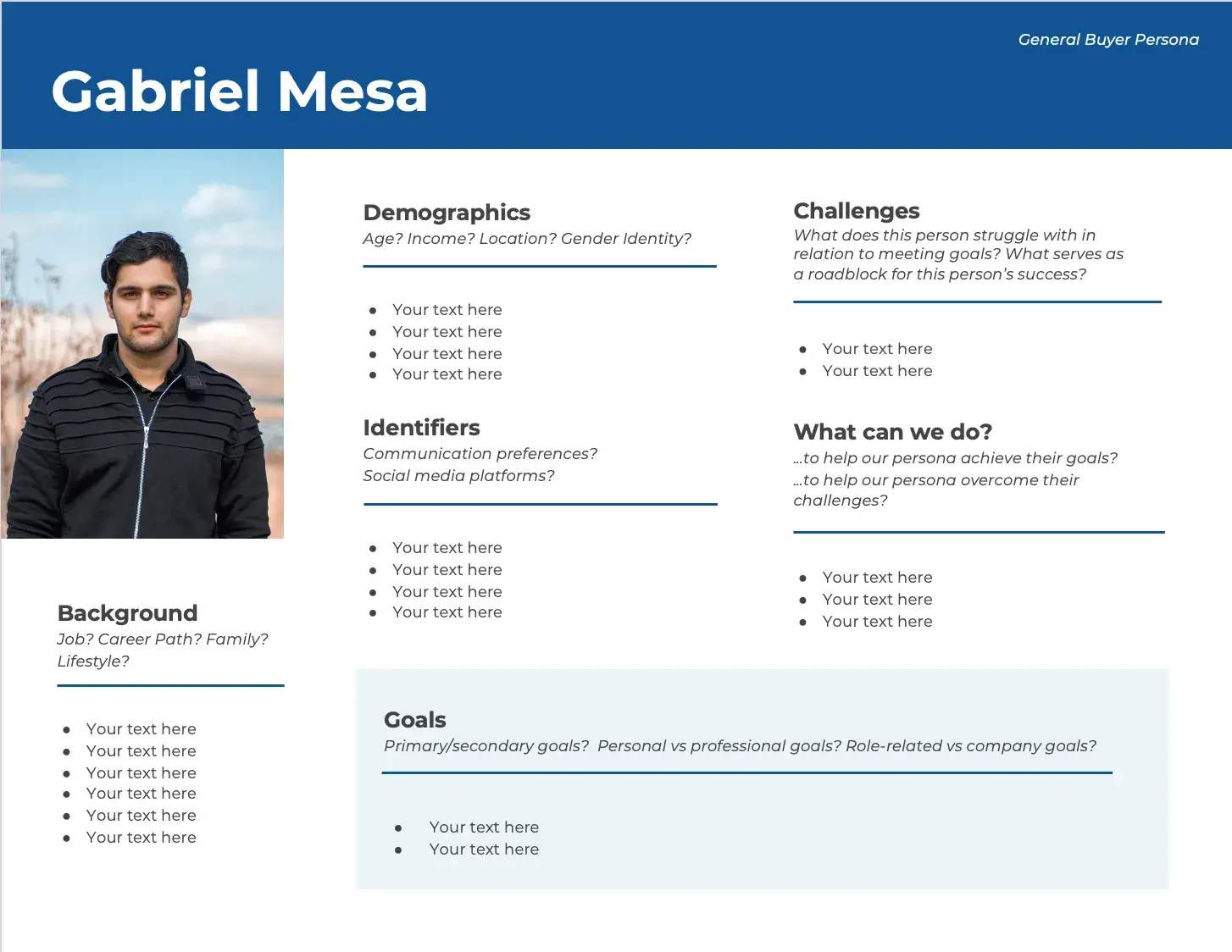
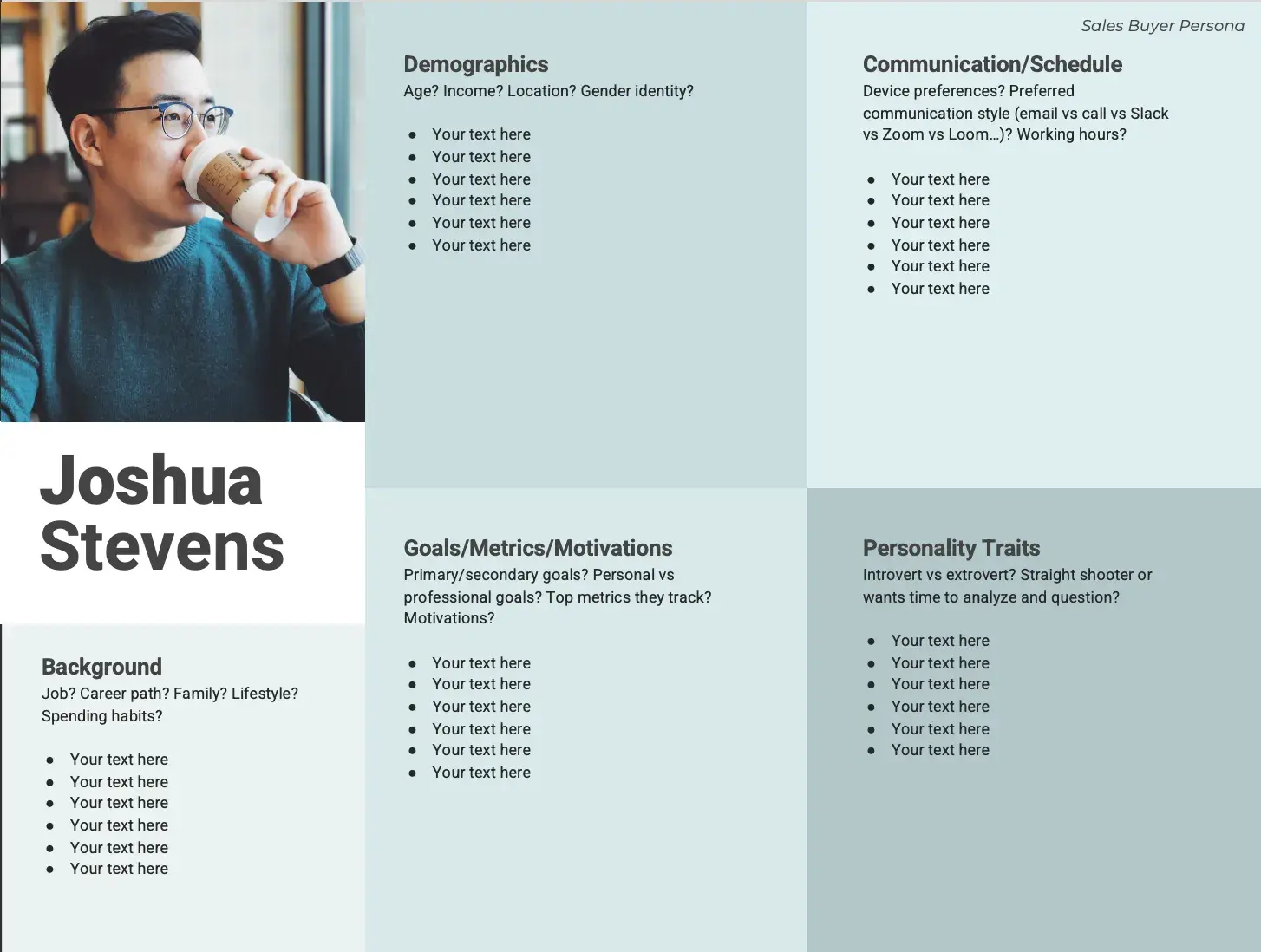
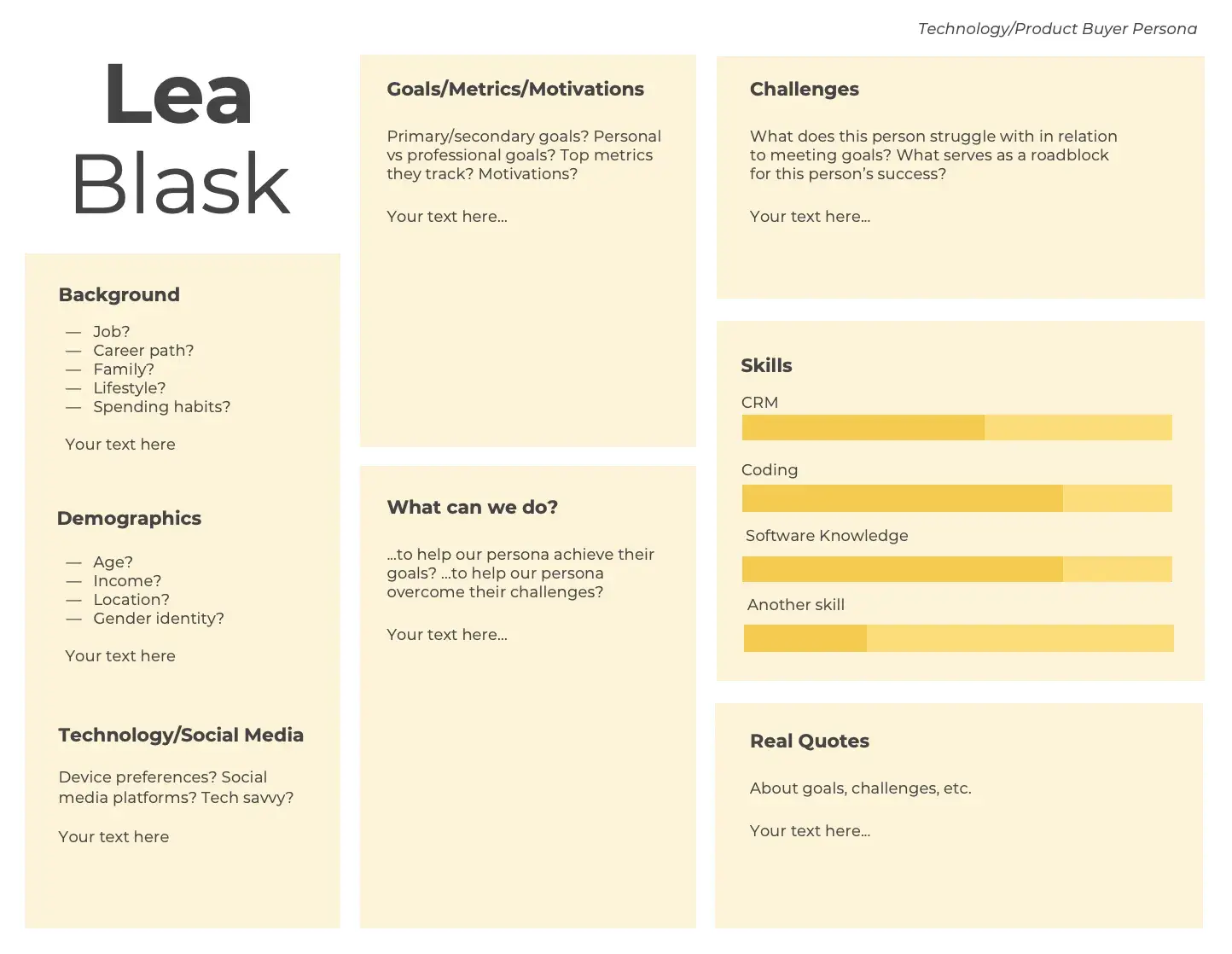

![The definition of a buyer persona [in under 100 words]](https://53.fs1.hubspotusercontent-na1.net/hubfs/53/Copy%20of%20Featured%20Image%20Template%20Backgrounds.webp)







